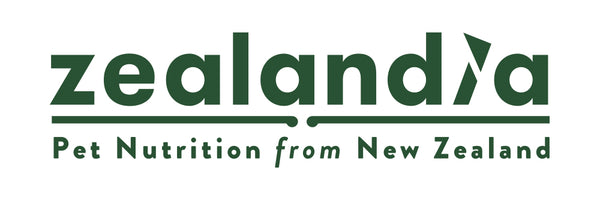What are the differences between Puppy/Kitten Food and Adult Pet Food?

Written by Dr. Rosa Leedham BVMedSci (Hons) BVM BVS MRCVS (United Kingdom)
Whether you’re thinking about adding a kitten or puppy to your family, or if your kitten or puppy is getting older, you may be thinking about what is the best food to feed them. If your pet is approaching one year old, it is probably time to think about switching from kitten or puppy food to adult food. But is making this change essential? What are the differences between these diets? And how can you best make the change? Let’s take a look.
Do we need to feed kittens and puppies a different food to adult cats and dogs?
The short answer is, yes - puppies and kittens need to be fed a different diet than adults. A pet’s nutritional requirements change at each life stage and therefore it is important to switch their diet to make sure their needs are properly met.
Puppies and kittens grow and develop quickly in their first year of life. Also, they burn a lot of calories with all of their learning, playing and exploring! Because of this, puppies and kittens need specific nutrients to ensure they have enough energy and can develop properly. Kitten and puppy diets are specially formulated to contain the right amounts of nutrients to support them through this rapidly changing life stage.
Sadly, nutritional imbalances in growing kittens and puppies can have disastrous effects in later life, such as poor growth, heart disease, malformed or broken bones and anaemia. Similarly, for adult pets with certain health conditions, the excess nutrients in puppy or kitten food can be problematic. For example, excess protein can make kidney disease and some types of liver disease worse so should be avoided.
What are the differences between kitten/puppy food and adult pet food?
Kitten and puppy food contains a higher amount of calories than adult dog or cat food and more protein and fats than adult food to support these growing youngsters. Importantly, kittens and puppies actually have different requirements, so they should never be fed the same food.
Let’s take a closer look at protein levels as an example. Protein is a very important nutrient for all animals. Not only are proteins an important source of energy, but they are essential building blocks for muscles, organs and many important hormones and enzymes (substances important for chemical reactions in the body). Therefore, a pet must consume enough protein to prevent health problems. Protein deficiency can cause a number of health issues, such as poor muscling and development, weight loss and digestive problems.
Young animals need more protein than adults. For example,
- Kitten food should contain at least 7.5 grams of proteins per 100 kcal of food (kcal means kilocalories, which is another word for a calorie)
- Adult cat food should contain at least 6.5 grams of protein per 100 kcal of food
Interestingly, dogs need less protein than cats! For example:
- Puppy food should contain at least 5.63 grams of protein per 100kcal of food
- Adult dog food should contain at least 4.5 grams of protein per 100kcal of food.
The levels of vitamins and minerals such as vitamins E and C, calcium and phosphorous are also carefully formulated in puppy and kitten food to support the developing immune systems, bones and teeth. Omega 3 Fish oils help to support brain and eye development too.
As an animal matures, they don’t need the same amount of nutrients and energy as their younger counterpart. For this reason, adult dog and cat food contain fewer calories, protein and fats to prevent them from becoming overweight and suffering from other health problems.
How do I ensure my pet is getting the right amount of nutrients?
Don’t worry about calculating the required levels of nutrients for your pet or checking that a particular food meets the requirements. This can be very confusing and fortunately isn’t necessary if you are buying a good quality, commercial diet! The most important thing is to ensure that you are feeding a ‘complete’ pet food for the correct age of the animal. Complete pet food has been specially formulated to contain the correct amounts of nutrients for each life stage i.e. kitten/puppy, adult or elderly cat or dog.
Each diet contains a different amount of nutrients, so there is no one-size-fits-all when it comes to how much to feed your furry friend. Therefore, it is important to follow the guidelines on the packaging. This will state how much to feed depending on the weight, age and/or body condition of your animal.
Using a body condition scoring tool, such as the WSAVA Body Condition Score for cats and dogs is a very useful way to track if your pet is underweight, overweight or in the optimal body condition. If you are concerned about what to feed your pet, or if you think he may be getting too much or too little food, contact your vet who will be able to advise you and examine your pet if necessary.
When should I make the change from kitten/puppy food to adult food?
When to switch from puppy or kitten food to adult food depends on the individual animal. Most kittens will reach the adult life stage on their first birthday. However, large breed cats such as Maine Coons and Norwegian Forest Cats will continue growing until they are eighteen months to two years old. The same applies to puppies; small breeds will reach maturity at one year old, but large breeds won’t reach adulthood until they are two years old.
What is the best way to transition my pet onto a new diet?
Whenever you are making any change in your pet’s food, you should do so slowly. Changing the diet too quickly can result in a stomach upset. It is best to make a gradual transition over 7-10 days, slowly introducing a new diet whilst reducing their original diet. A helpful guide is as follows:
Day 1-2: Feed 75% of the portion of kitten/puppy food and 25% of the new adult food
Day 3-4: Feed 50% kitten/puppy food and 50% adult food
Day 5-7: Feed 25% kitten/puppy food and 75% adult food
Day 8+: Feed 100% of the new food
When you are making the change, keep an eye out for any signs of a stomach upset. For example, any diarrhoea, vomiting or constipation. If you have any concerns about how your pet is reacting to a new food, it is best to contact your vet who will be able to discuss any symptoms and provide advice or treatment if needed.
What if my puppy or kitten eats some adult food?
If your kitten or puppy accidentally eats some adult food, (or vice versa!) – don’t worry. A one-off accident is not likely to cause any problems. If you have any concerns, then contact your vet who can discuss this with you.
Long-term feeding of food designed for the wrong life stage is more problematic and can lead to deficiencies or an excess of essential nutrients. For example, feeding an adult pet food designed for younger animals puts them at risk of obesity or worsening health conditions if they suffer from kidney or liver problems. Kittens and puppies may struggle to eat dry food designed for adults, as large adult kibble can be too large for their small teeth!
Summary
Whatever life stage your furry friend is in, it is important to select a food which is appropriate for his age, breed and activity levels and takes into account any health conditions he may have. The best way of ensuring your pet’s food is suitable is to feed a complete pet food, designed specifically for his particular life stage. Growing kittens and puppies need plenty of calories, proteins and fats to help them develop properly. Fortunately, there are plenty of commercial diets available for you to choose from, but if you have any concerns then it is always best to contact your vet who will be able to advise you.




